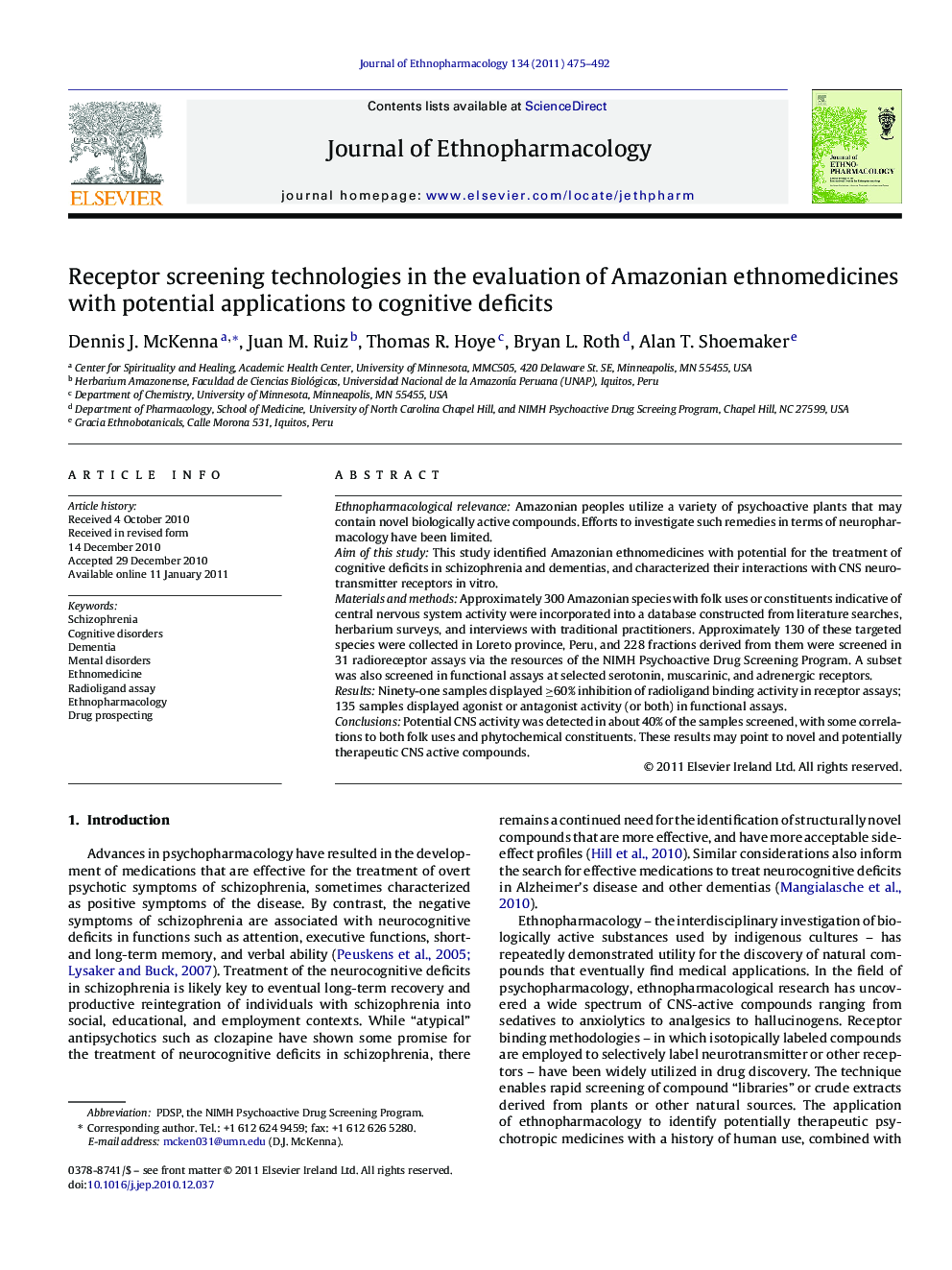| Article ID | Journal | Published Year | Pages | File Type |
|---|---|---|---|---|
| 5839584 | Journal of Ethnopharmacology | 2011 | 18 Pages |
Abstract
Ethnopharmacological relevanceAmazonian peoples utilize a variety of psychoactive plants that may contain novel biologically active compounds. Efforts to investigate such remedies in terms of neuropharmacology have been limited.Aim of this studyThis study identified Amazonian ethnomedicines with potential for the treatment of cognitive deficits in schizophrenia and dementias, and characterized their interactions with CNS neurotransmitter receptors in vitro.Materials and methodsApproximately 300 Amazonian species with folk uses or constituents indicative of central nervous system activity were incorporated into a database constructed from literature searches, herbarium surveys, and interviews with traditional practitioners. Approximately 130 of these targeted species were collected in Loreto province, Peru, and 228 fractions derived from them were screened in 31 radioreceptor assays via the resources of the NIMH Psychoactive Drug Screening Program. A subset was also screened in functional assays at selected serotonin, muscarinic, and adrenergic receptors.ResultsNinety-one samples displayed â¥60% inhibition of radioligand binding activity in receptor assays; 135 samples displayed agonist or antagonist activity (or both) in functional assays.ConclusionsPotential CNS activity was detected in about 40% of the samples screened, with some correlations to both folk uses and phytochemical constituents. These results may point to novel and potentially therapeutic CNS active compounds.
Keywords
Related Topics
Health Sciences
Pharmacology, Toxicology and Pharmaceutical Science
Pharmacology
Authors
Dennis J. McKenna, Juan M. Ruiz, Thomas R. Hoye, Bryan L. Roth, Alan T. Shoemaker,
